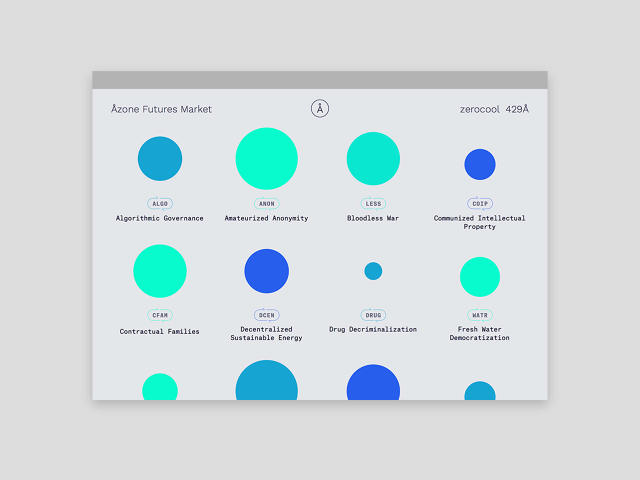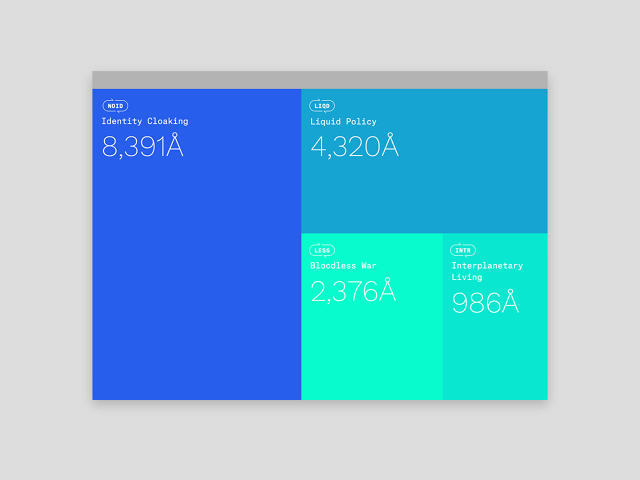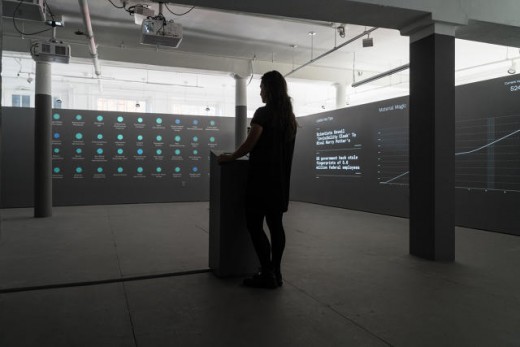The Guggenheim Launches Its First Ever on-line Exhibition
The Azone Futures Market is an interactive online marketplace, and a radical method to incorporating digital expertise into museums.
November 4, 2015
As institutions focused on retaining history, museums have had to think about new methods to means emerging applied sciences. to this point, most main museums have accomplished that generally through incorporating digital parts into bodily exhibitions, making a flurry of interactive displays, specifically designed apps, and campaigns to attach with visitors over social media.
Troy Therrien, curator of architecture and digital initiatives on the Guggenheim, has a special method for desirous about the function digital expertise plays. He believes slightly than incorporating digital works into the analog establishment, museums should be rethinking the structure of exhibitions altogether. for this reason remaining week, Therrien launched Åzone Futures Market, the Guggenheim’s first digital exhibition that allows guests to invest in technologies of the long run.

“a variety of museums have long gone the way of introducing more devices and gizmos into their exhibitions so that people can experience [the technology] firsthand, but that doesn’t give you a sense of the effect of these things,” says Therrien. “It’s too direct, and it can be no longer interpretive sufficient. the speculation for the Åzone Futures Market was once to create one thing that will itself display the dynamics of the best way that know-how is controlling components of our lives.”
To that end, Åzone is not just an show off about expertise, the exhibition is the technology—and the digital architecture upon which the exhibition is constructed is constantly morphing and changing so long as guests are collaborating in it.
here’s the way it works: Upon getting into the Åzone site, you obtain 10,000Å of the native foreign money. Therrien has worked with a couple of contributors—artists, architects, theorists, strategists—to create 36 “futures” that you could invest in, similar to Algorithmic executive or Drug Decriminalization. relatively than trading money as in a financial market, Åzone users exchange information within the form of articles, or “scorching pointers.” The more precious others in finding your information—i.e., if other customers change on that tip—the more coins you obtain.

to construct the marketplace, Therrien turned to Studio Folder to design the website online and knowledge science guru Hugo Liu to create an algorithm that would permit the market to mirror supply and demand. The site is powered via the collaborative platform Are.na, conceived by means of programmer Charles Broskoski, and took about three months to complete. (against this, a customary exhibition for the Guggenheim can take years to plot.) An accompanying bodily exhibition, the Åzone Terminal, shows the net process in real time in a space that mimics the immersive Bloomberg terminal.

the opposite key difference between Åzone and a bodily-only exhibition? the former does not have an finish date. When the exhibition launched in late October, the empty gallery area used to be ready to be crammed: The structure had been built, but what users and contributors do with it has been figuring out the course of what is introduced visually.
“Now that the market appears to have a wholesome team of users, we’re about to show it over to the contributors to assert, ‘What would you do with this architecture?'” Therrien says. He compares this next step to giving an artist a clean wall in a gallery and full rein to do with it as she pleases. “Now they have to respond to something that’s dynamic and has actual wants.”

The Åzone Futures Market demonstrates another way clever design might play a task in the shift to expertise-driven exhibitions. other main museums have been addressing the digital landscape in various ways; the Cooper Hewitt, for example, recently received an app for its collection so as to protect digital culture. final yr, the Google Cultural institution digitized 6.2 million objects and artifacts from museums all over the world, making them available to any individual with an internet connection.
although Therrien’s way is to maneuver exhibitions on-line, he would not see the digital house changing the physical exhibition any time soon. as an alternative, he says, he’d like to see the physical museum remain a spot of respite from a hyperconnected world, and the digital realm as a place for experimentation.
“i believe having the ability to step out of the arena for a moment is important, and physical museums provide that operate,” Therrien says. “If museums can harness know-how, not just to replicate the explosion of notification and tracking and surveillance that occurs an increasing number of all over the place else, that’s where i believe they may be able to get truly attention-grabbing.”
Pay a consult with to the Åzone Futures Market your self by using going here, or checking it out at 181 front side road in the Seaport tradition District, New York city* via December 31.
*A earlier model of the article incorrectly mentioned that you may talk over with the Åzone Futures Market at the Guggenheim museum. The physical extension of the exhibition is in truth in a gallery at 181 entrance boulevard in NYC.
(31)





